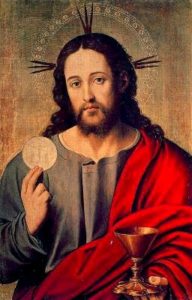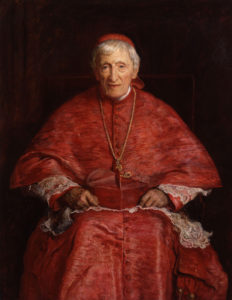In this article, I will demonstrate how Disney’s film Moana can be read as a Catholic film, and specifically how Moana as a character is analogous to a Catholic convert that grew up as a Protestant Christian. This argument in no way presumes that Moana is meant to contain any of these symbolic connections to the Christian faith, but instead aims to highlight how various symbols and themes that are strong and valuable in Moana are also relevant to describe a Protestant’s conversion to Catholicism.
First, I shall look at Moana’s life on Montinui. In the song “Where You Are,” we see a beautiful, yet slightly tragic, account of village life on the island of Montinui. To a certain extent, the song motivates the viewer to see both elements in village life. The beautiful aspect comes from how Moana’s father describes a picturesque life on the island where tradition is encouraged through dancing, for example, and through the agricultural simplicities that villagers tend to. The way that he sings about the coconuts, fishing, and how the villagers treat their necessary tasks (“we joke and we weave our baskets”) is a seemingly ideal way of living into which he is inviting Moana. All of the beauty weaves back into how her father starts off the song:
“…The dancers are practicing
They dance to an ancient song
(Who needs a new song? This old one’s all we need)
This tradition is our mission…”
This is the crux of the song and what bridges the beautiful with the tragic. Her father is appealing to beauty through tradition, highlighting that what has been handed down to Moana has value and is worth maintaining. Yet, as we see in Moana’s intermittent lines, this is not a solely beautiful concept. For Moana this tradition is something that traps her. For herself, she feels the desire to go out into the ocean, something that she believes she is called to, as she later sings about in her solo song “How Far I’ll Go.” Furthermore, this is not a purely selfish desire. Moana’s grandmother fosters it, telling her that it is an entirely appropriate thing to feel, blaming her son’s “stubbornness and pride” as that which traps Moana. While it seems that the tragedy is the point of the song, existing to move the movie’s plot along in a stereotypical coming-of-age rebel story, it is only half of it. The overarching goal of the song is to highlight to Moana the importance of her family and the great roots that she has in the island and its history, and while she faces the tragedy of not fulfilling a natural desire to go out on the sea, she learns to find a peace and happiness with the beauty that her father showed her. In the end, she feels both things: the beauty of her family and tradition and all that is good within it, yet the tragedy of not fulfilling a natural desire to go out into the sea.
Going into this first song, the experience of the viewer is not entirely neutral with regards to Moana’s desire for the sea. The leading scenes for the song show Moana as a toddler, toddling over to the sea, where the Sea, as a mystical entity, attempts to give her the Heart of Tefiti. As viewers we are privy to the fact that this makes Moana’s plight more worthy, as she has the backing of mystical forces, while the tradition of her village, while not lacking in force, lacks mysticism.
The roots of the Catholic reading begin with Moana’s plight. The village of Montinui can be representative of Protestant Christianity. It has a tradition that goes back many generations and has something of an authority of its own, but in and of itself lacks in mysticism. Moana, growing up in this community, feels attached to it and does in fact see the beauty of it. Similarly, a Protestant-turned-Catholic (PTC) would have grown up in a similar way. They loved their families, they loved God, they loved the Bible, and were promised that all of their answers would be found in the traditions of their families, but they were unable to find a true peace with it all. Something, at some point or another, started tugging at their hearts and began encouraging them to imagine something greater than the faith that they had been raised in. A PTC, just like Moana, learned growing up that they could “find happiness right / where you are / where you are.”
At the heart of the island, later, is a hint of what Moana is feeling deep in her heart. Her grandmother shows her that she is not irrational for wanting to go out to sea because Moana’s ancestry is steeped in the notion. Upon entering a cave at the core of the island, she finds the core of the island’s identity – voyaging. Suddenly Moana realizes that her view of the world was only ever a portion of what actually existed. The traditions that her father had espoused were only ever part of the story; there was something more. Rather than only the traditions of Montinui being the core of her culture’s story, she sees that the voyaging of her ancestors reconciled both the beauty of their traditions and the beauty of the sea and exploration. The coconuts and simplicity of Montinui were only a small portion of her people’s larger story that spanned the wide ocean.
Similarly, a PTC likely had a moment like Moana’s discovery of the cave of canoes. They thought they understood the fullness of their faith but then might have come across a certain piece of information that put it off-balance. For some, it is the towering beauty of the Catholic Church; the cathedrals of the world alone have great sway over their visitors, with the reaction to the burning of Notre Dame in Paris being a pertinent piece of evidence. Others may find it in liturgy, the general motions and practices of the Catholic Church absent from other Protestant denominations. Some might be inspired by history, and by reading the early Church fathers to see that the faith that has lasted almost 2,000 years was much more Catholic than Protestant. Whatever cave that a PTC found, they were struck by it, and it began them on a journey not unlike Moana’s. They see that the tradition they grew up in is actually relatively young compared to the more full tradition of the Catholic faith.
Moana’s grandmother, inciting her to follow her passion for the sea and literally bringing Moana straight to the boats, seems to be sowing divisiveness. She is literally encouraging her granddaughter to abandon her traditions, go out to sea, and fulfill Moana’s community-detracting wishes of leaving the island behind, right?
Wrong! While Moana’s actions seem divisive, the only reason that she actually follows through with going out to sea and following her grandmother’s advice is to restore the way of life that the village should have had from the beginning. The island is falling ill, in a rather surreal and mystical yet very real way, and Moana is motivated to leave because her grandmother claims that Moana has a way to heal not just the island, but the whole world. Moana does not feel only a bold notion of rebellion against the island when she leaves; she also and mainly feels a strong love for her people and her island. She treks out into the sea because she wants to find a way to make what she already had better.
“I am a girl who loves my island,
And a girl who loves the sea,
It calls me!
I am the daughter of the village chief,
We are descended from voyagers,
Who found their way across the world,
They call me!”
It is not something that her father would ever understand, though. For Moana’s father such an action is ultimate betrayal. Were it not for Moana’s grandmother dying, he would have burned down the boats, and Moana’s hopes of ever sailing would have been gone forever. Of essence to her development, though, is that her growth is oriented towards her people and not away from them, despite the surface-level appearance of her actions and motives.
Ultimately, upon learning the core identity of her village’s culture, and by reconciling all that her grandmother ever taught her with this knowledge, Moana sets off into the sea to correct what had gone wrong so many years before.
A PTC’s actions, seeking to become Catholic while living in a Protestant community, also seem to be divisive. Rather than seeking unity with the community the PTC lives in, they are breaking away from it to set off on a journey that leads them away. But the PTC does not leave mainly out of rebellion. A true rebel of faith turns away from it completely, and this is not the way of PTCs. Instead, they seek to synchronize the newfound old truths that they stumbled upon, or were led to, with the faith they already had. With a new pebble of information that the Holy Spirit leads them to, they begin a journey to set that pebble where it belongs, healing the world around them and becoming that which Protestant faith never would have allowed them to be.
So what is the wrong that Moana attempts to set straight? She needs to mend a wound, fill a hole in reality that had turned a source of healing and right-direction for the world into a source of divisiveness, pain, and confusion. The Heart of Tefiti, once stolen by the demigod Maui to impress his human admirers, needs to be brought to Tefiti once more so that the order of the world can once again flow properly.
The equivalent of Maui stealing the Heart of Tefiti to Christianity is the Protestant Reformation. While there were fruits of this event for the Catholic Church, it overall led to a break in tradition that did more damage to Christianity in the world than it did good. Martin Luther, John Calvin, and other reformers sought to take the faith and turn it into something better. They took the authority of the discernment of Scriptures and brought it right to the common man, telling them they had the power to know the true meaning of it rather than following what had been given to them by authority. This is not unlike Maui attempting to bring the Heart of Tefiti to mankind. He claims that he wanted to do it in order to benefit man, granting him the power to create life, the power which previously belonged only to the Earth Goddess Tefiti. Ultimately, even though good was intended from this rupture of Catholic tradition, it only led to chaos. The Reformation led to the most thorough division of material Christian unity that the world has ever seen. While prior to the reformation Christians were united under a single faith and a single mission, after it a theological division turned into real physical divisiveness, pain, and confusion. Seeing the actual violence that resulted from such a divide, subsequent generations sought to put religious and faithful life to a backburner because placing it at the center only led to violence. After the Protestant Reformation, the number of divisions in worldly Christian organization only ever increased and were never decreasing. These divides, as well, weren’t always peaceful. Modern philosophy and Christian denominations, seeing the havoc being wrought, sought to leave religion behind and to seek a greater and more peaceful ‘truth,’ not unlike the new traditions that the village of Montinui set up after Maui stole the Heart of Tefiti.
Moana, then, restores the Heart of Tefiti, not only by bringing it directly back, but also by taming Maui and his rebellious nature. She shows him how his inner desires sowed division and pain instead of bringing more actual joy to humanity, and thus corrects his course. While it is Maui that teaches Moana how to sail, Moana helps Maui seek where to sail.
A PTC seeks, while not immediately for the whole world, to bring the heart of their faith back to where they see it in the more complete context of the Catholic Church. Once they bring their faith there, all that they know of the world becomes clearer. Many PTCs must confront the divisions that Luther and other reformers set in motion. They must answer the theological questions and arguments that the reformers posed and decide who was more correct in their position. The question may not be “what do I think is the right theology?” but rather “who best holds authority?” For a PTC, coming to terms with Catholic Theology is a lot like restoring the Heart of Tefiti, and the result is a feeling of synchronicity that they never knew prior; the islands heal, the fish return, and peace is sown.
Moana’s journey is not a typical hero’s journey. While in so many ways the story revolves around Moana finding her right place in the world and performing a virtuous act that saves it, she is righting an order that was thrown off so many years before. Because of a singular event that happened long before her time she was living in a world that seemed askew. In many ways, the purpose of her journey is almost entirely about the world around her and her village rather than herself.
A PTC similarly does not find themselves in Catholicism as a result of selfish desires, but rather find themselves in the midst of Rome’s Church because they feel compelled by a sense of wholeness and completeness that is not found elsewhere. As the Ocean called Moana, the Holy Spirit called the PTC. In the end, Moana restored a truly whole way of life to her people and helped not just herself, but her people as well. Even though her family viewed their tradition as entirely complete, Moana was able to listen to the Ocean and discover that it was incomplete. She took it and made her tradition whole, making her life more whole in the process.






